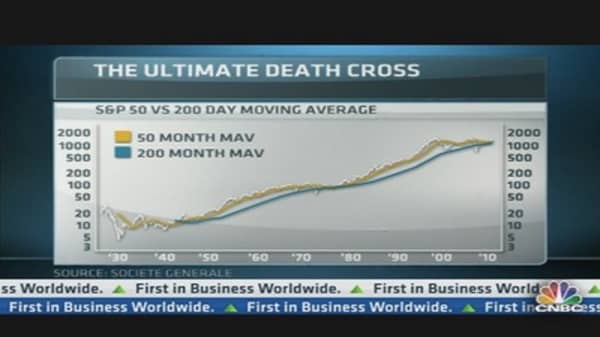The S&P 500 index is on the verge of hitting an “ultimate” death cross, where the market’s 50-month moving average falls below the 200-month average, according to a research note by Societe Generale.
A death cross is the shape made on a chart when a market’s long-term moving average breaks above its short-term moving average or support level. It is seen as a sign of a looming bear market, or a cue to sell.
In the Societe Generale note, published on Monday, strategist Albert Edwards said the last time the S&P 500 came close to a monthly death cross was in 1978, “towards the end of the 1965-82 secular bear market.”
Edwards added that Japan suffered a monthly death cross in 1988, “and 14 years later we are still in the firm embrace of the bear.”
In a further recessionary sign , Edwards said aggregate monthly analyst optimism data had slid below 2011 and 2010 lows to under 40 percent. “These data are entirely consistent with a U.S. already in recession,” he said.
For another look at the S&P 500, click here.
— By CNBC.com's Katy Barnato





